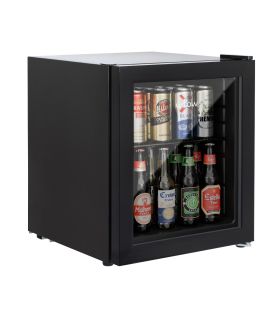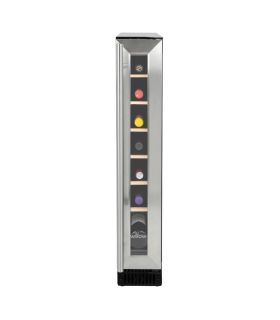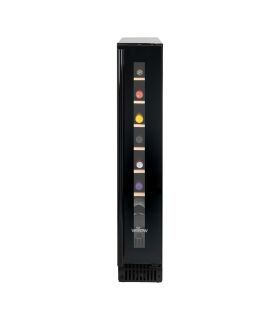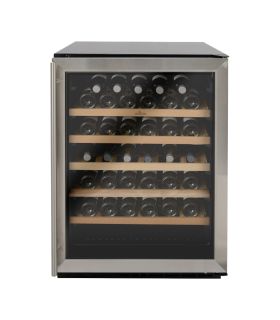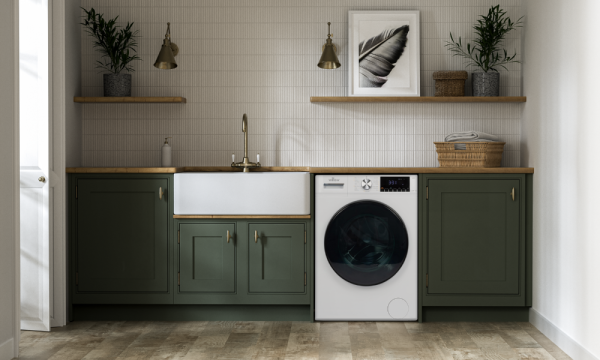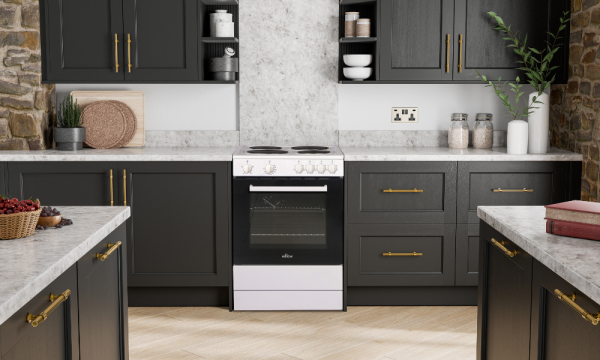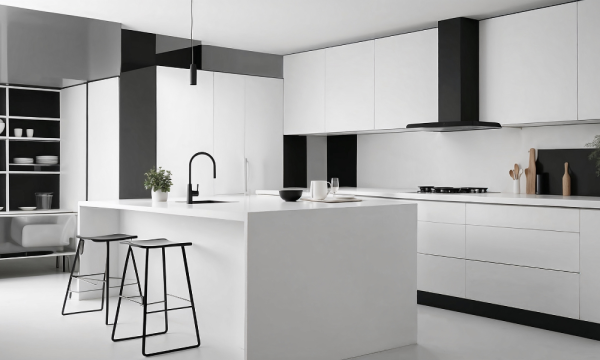Anyone who enjoys a glass of wine will understand the importance of ensuring it’s stored at the right temperature before serving.
Wine coolers are rapidly becoming a must-have appliance in modern homes. Once the preserve of pubs, restaurants, and wine bars, wine coolers are being embraced by wine lovers, whether they’re confirmed connoisseurs or people who like the occasional glass of wine with a meal.
But what is a wine cooler, and what makes wine coolers such a great purchase?
A wine cooler is a refrigeration appliance designed to store and chill wine bottles, and other beverages, at the ideal temperature. It works in the same way as a refrigerator, but is usually significantly smaller. Wine coolers will also generally feature a racking element to enable the safe storage of wine and other bottles prior to being consumed. Wine coolers remove the difficulties of ensuring the right temperature for storing your wine, which can be a problem when bottles are kept in the fridge. Because wine coolers are not opened and closed several times a day, as is the case with a family fridge, opened wine keeps better, for longer. For that reason, wine coolers are a handy addition to your kitchen or home bar.
Wine coolers are a great addition, and provide a number of benefits when it comes to storing wine effectively.
The key benefits of wine coolers include:
Temperature control
Increasingly, everyday wine drinkers are coming to understand the importance of storing and enjoying wine at the correct temperature. Wine, whether red, white, or rosé, is sensitive to temperature fluctuations. To enjoy wine with an optimal flavour and quality, it’s essential that it’s stored at the appropriate temperature. Often, this will differ from room temperature, while the settings of an average fridge are often too cold which has a negative impact on the wine’s taste.
Flavour and quality
Exposure to light, heat, and temperature changes can all have a negative impact on the flavour and quality of your wine. This can be a particular problem over time, with wine stored on a rack where it is exposed to daylight, gradually reducing in quality over time. Wine coolers go some way to mimicking the daylight reduction and cool temperatures found in a traditional wine cellar. They ensure your wine retains the flavour, aroma, and overall quality that you love.
Protection from vibrations
While many people understand the importance of protecting wine from direct sunlight and temperature fluctuations, what’s less well-known is the impact that vibrations can have on wine. Household appliances, and foot traffic, can all create vibrations that disrupt the sediment in your wine. When this occurs, the taste can suffer. Wine coolers protect wine from vibrations, ensuring a consistent environment.
Correct humidity level
If your wine bottles are corked, then ensuring the right humidity level is all-important to preserve their integrity and to protect the wine inside. Insufficient humidity can cause corks to dry out, allowing air to enter the bottle and the wine to spoil. Humid atmospheres, as often found in kitchens through cooking, can lead to corks developing mould or mildew, and even starting to rot. Wine coolers control the humidity to remove this potential problem.
Organised storage and accessibility
Wine coolers enable you to organise your wine bottles and keep track of what you have available. They are also highly accessible, making it easy to find the right bottle when you need it. Wine coolers get your wine bottles out of the fridge, meaning they’re not competing for space with other items that have different temperature needs. Your wine is easy to find and stored at the right temperature.
Because wine coolers provide a temperature-controlled and convenient storage solution for wine and other beverages, they can be placed wherever is most convenient in your home. For many people, the kitchen is the obvious place. Wine coolers are available in under-counter and countertop options, meaning they can easily be fitted into your existing kitchen. Often, people will incorporate wine coolers into their kitchen design, creating a seamless, stylish look. If you don’t have space in your kitchen for a wine cooler, then a utility room can be another convenient option. If you have a home bar, perhaps in a garden room, then a wine cooler can be an excellent addition if you have an available power supply. Wine coolers are highly adaptable as well as reliable, making them a great option wherever you plan to store it.
Wine coolers are highly efficient household appliances that are easy to maintain.
There are a few steps to bear in mind that can help you get more from your wine cooler.
Proper installation
It’s important to ensure that your wine cooler is correctly installed. This means paying attention to the manufacturer’s instructions to ensure that it is placed in an appropriate location. In practice, this will usually mean ensuring there is airflow around your wine cooler and it is kept on a stable surface. Blocked ventilation can affect the efficiency of your wine cooler and potentially cause overheating.
Regular checks
You should regularly check your wine cooler to ensure that it’s operating correctly, maintaining the right temperature, and hasn’t developed any issues. This is a quick process and ensures any problems are addressed quickly. Pay attention to seals which can deteriorate over time, allowing air to enter your wine cooler. Empty and clean the drip tray frequently to prevent mould or overflow. Dust can gather on the condenser coils, so these should be cleaned as part of your regular schedule.
Cleaning
As touched upon above, it’s important to ensure your wine cooler is cleaned regularly. This includes giving your appliance a thorough clean every few months. Turn it off to prevent any accidents, carefully taking out any bottles to make cleaning easier. Always use non-abrasive cleaning products, like a mild detergent and warm water, to clean the interior and exterior. Be gentle around mechanisms and shelving to avoid potential damage. After you’ve finished cleaning, let the cooler air out before turning it back on and placing the bottles back inside again.


